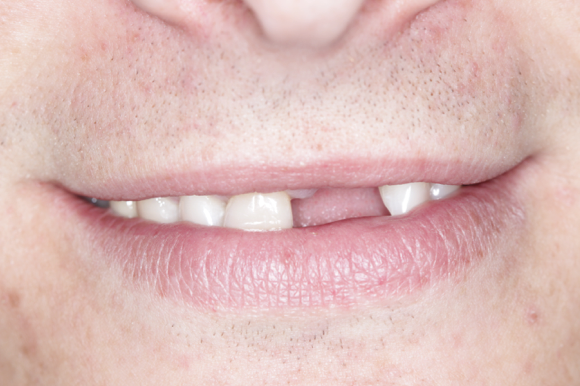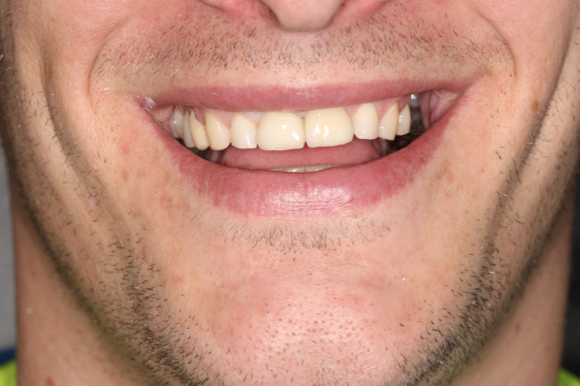REPLACING A SINGLE MISSING TOOTH WITH AN IMPLANT
If you are missing a single tooth, an implant is as close to the original tooth as you can get.
If you are missing a single tooth, an implant is as close to the original tooth as you can get.
DENTAL TREATMENTS
If you are missing a single tooth, an implant is as close to the original tooth as you can get.
It looks, functions and feels very like a natural tooth. There is no movement at all when you bite and chew.
Psychologically, patients may find implants make them feel like they never lost a tooth.
Before and After (hover or slide to view):


There are a significant number of other important, clinical advantages that a VIDA implant has over the option of living with a missing tooth space. A dental implant helps to keep the surrounding teeth in the correct position and stops the remaining teeth carrying extra force that may otherwise result in breakages. Implants also work independently of other teeth so do not require adjustment of healthy teeth unlike bridges and dentures. They provide stimulation to bone, which helps maintain it. Without this stimulation, bone is lost and facial appearances may change.
For people who have lost a front tooth due to trauma and otherwise have a very healthy mouth with little or no dental work, a single dental implant is likely to be as close to the original tooth as you can get.
In the long term, a single implant may be more aesthetic and easier to keep clean than the other options because the implant provides function to bone, keeping the level of surrounding bone and gum more stable, delaying bone recession and the formation of spaces around the replacement tooth. Inevitably, over time gums do recede around implants too, just as they would have done around the tooth the implant replaced. Some patients will choose to renew the implant crown to camouflage changes in the surrounding gym architecture. However, with proper care, interventions such as this are minimised.
Contact VIDA Dentistry
|
Introducing our NEW Combined Total Healthcare Plan. The complete dental & medical healthcare solution. |